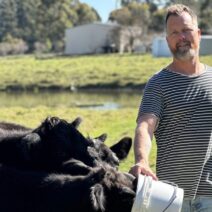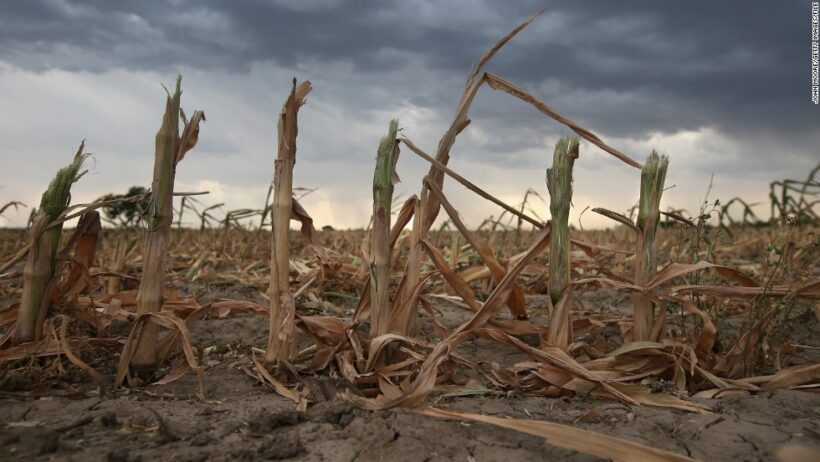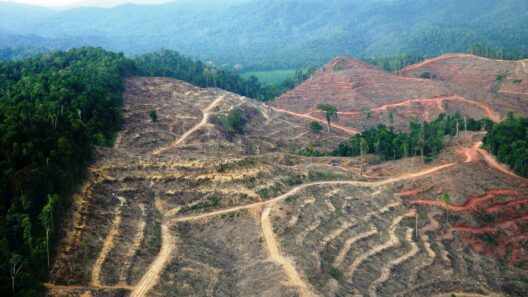As the world grapples with the indisputable realities of climate change, the specter of drought and famine emerges as one of the most alarming consequences lurking in the shadows of global warming. The projections indicate not merely a shift in weather patterns but a radical transformation of the environment, food security, and human health. The urgency of addressing these issues cannot be overstated. Understanding drought’s intricate relationship with climate change is crucial for anticipating its ramifications and preparing for the grim future it could bring.
Drought, by definition, is an extended period of deficient rainfall relative to the statistical multi-year average for a particular area. However, the notion of drought becomes increasingly complex when considering the multifaceted influences of climate change. Rising global temperatures can exacerbate drought conditions, leading to more frequent and severe dry spells. This phenomenon creates a precarious situation for both agriculture and natural ecosystems, serving as a harbinger of famine.
Much of the world’s population relies heavily on agriculture for sustenance and economic stability. Crops, livestock, and fisheries form the backbone of food security across diverse regions. Yet, as drought conditions intensify, the viability of these resources diminishes. Soil depletion, reduced crop yields, and the extended periods of dry weather create an environment ripe for famine. Food scarcity breeds not only hunger but desperation, leading to social unrest and conflict. Historically, regions that have experienced severe drought have also seen significant shifts in population, as people are compelled to migrate in search of more hospitable environments. This displacement creates ripple effects, straining urban areas and challenging infrastructures.
Moreover, the interconnectivity of global food systems complicates the landscape even further. A drought in one region doesn’t merely affect local communities; it can impact food prices and availability worldwide. For instance, countries dependent on cereal imports may find themselves vulnerable to the vicissitudes of climate patterns experienced far from their borders. As global warming continues to throw traditional agricultural cycles into disarray, the logistical nightmare of feeding a growing population becomes ever more daunting.
The reality is stark: climate change does not respect borders or socio-economic divisions. The most vulnerable populations often bear the brunt of these changes, as they typically have the least capacity to adapt. Low-income nations and communities already grappling with poverty, lack of infrastructure, and insufficient resources are particularly at risk. This scenario calls for a concerted global effort in addressing climate change and its cascading effects. Enhanced investment in sustainable agricultural practices, innovative water management strategies, and renewable energy can play vital roles in mitigating these issues.
Yet, the conversation around drought and famine should also shift towards empowerment and resilience-building. Communities can be fortified through education and resource-sharing initiatives that promote adaptive strategies. Localized farming techniques and traditional knowledge can help mitigate the risks associated with changing weather patterns. Furthermore, advancements in technology, such as drought-resistant crop varieties and precision agriculture, offer hope for improving yield performance under increasingly arid conditions.
As the grim future looms, the narrative surrounding drought and famine must pivot towards curiosity and proactive engagement. How can societies innovate in the face of adversity? What role do policy frameworks play in steering nations towards more sustainable and resilient methods of agricultural production? These questions spark critical discourse that, when answered, can foster a sense of urgency and responsibility. The hope lies in our capacity to adapt, legislate wisely, and harness the ingenuity nestled within communities across the globe.
Additionally, the role of science cannot be overstated in this equation. Research into climate systems is paramount for understanding the nuances of drought dynamics. Efforts to model climate impacts and develop predictive analytics can arm decision-makers with the foresight needed to mitigate risks. Collaborative international initiatives may yield groundbreaking solutions that transcend national interests and prioritize human survival in an increasingly unpredictable environment.
Engaging with the public on these topics is equally essential. Awareness campaigns aimed at educating individuals about the effects of drought and climate change can inspire collective action. Grassroots organizations, community workshops, and digitized platforms for knowledge-sharing can facilitate a greater understanding of these crises, instilling a sense of urgency that propels citizens into action.
Looking ahead, the interplay between climate change, drought, and famine demands a multifaceted strategy that embraces sustainability, resilience, and innovation. The apprehension surrounding food security must evolve into a narrative of empowerment and community-driven solutions. To confront the realities of global warming, individuals, governments, and organizations must join forces, cultivating a synergy that accelerates change.
In summation, the intersection of drought and famine reveals a chilling reality borne of global warming—a future marked by uncertainty and potential devastation. However, through informed dialogue, proactive strategies, and a shared commitment to sustainability, humanity possesses the tools to not only survive but thrive in the face of these challenges. The pathway ahead is fraught with obstacles, yet it is also illuminated by the promise of progress and resilience. Embracing this duality may well determine our collective fate in the enduring saga of climate change.





